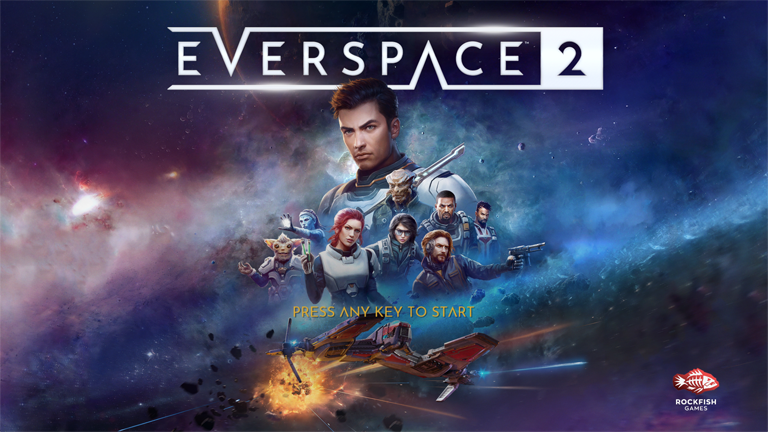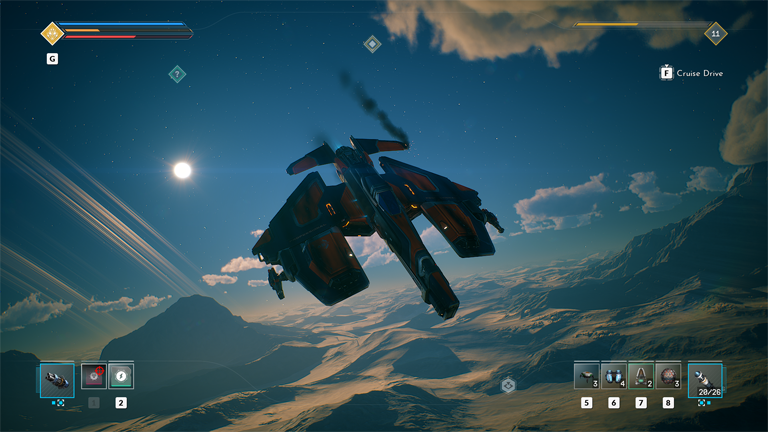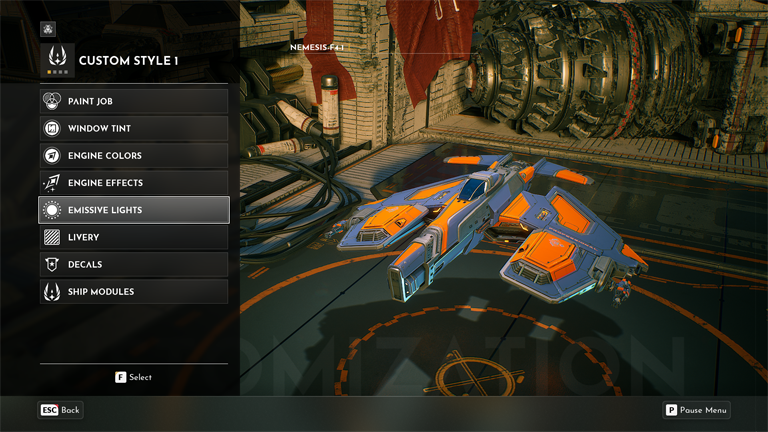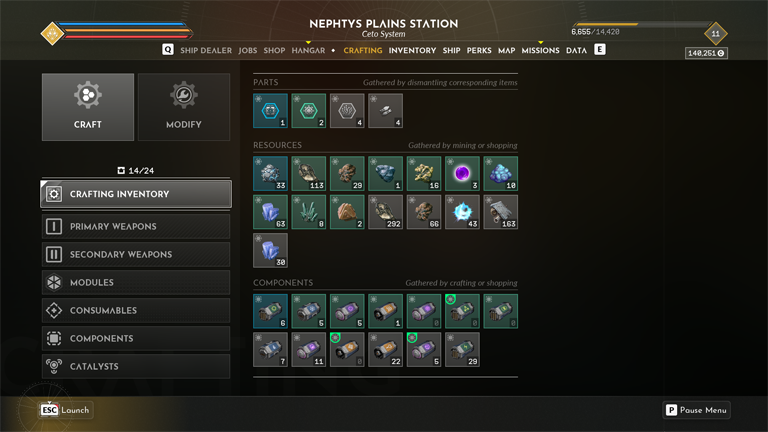What's an illicit military clone to do?
There you are – keeping your head down, flying escort for some grubby corporate mining outfit – when an Outlaw attack sees you captured and brought to the (oh-so-unwanted) attention of Colonial forces, who are still single-mindedly intent on erasing you from existence...
Why – shoot your way out, of course!

While the premise of Everspace 2 isn't all that complex and its mechanics heavily influenced by better-known games (mostly Diablo and Descent); the care with which the game is put together translates into a lot of (admittedly adrenalized and very grindy) fun.
In the game you play one of the last surviving clones of Adam Roslin – the protagonist of Everspace The First – who, through clone facility shenanigans, created a veritable army of himself (which is how the original game justified its "die-and-try-again", roguelike mechanics). Stuck in an unfriendly area of space called the Demilitarized Zone (DMZ), Adam is trying to earn his way out when complications chuck him headfirst into about 20-30 hours' of heist-y plot which exists in parallel to potentially endless, procedurally generated gameplay.
The 2023 simcade shooter by Rockfish Games is an odd beast that I backed in development and then sorta forgot about. Like most people, I was impressed with the graphics and frenetic gunplay of the first game, but not-at-all enthralled by its dependence on roguelike mechanics. So when Everspace 2 promised RPG-like stats and perks, a Diablo-esque item system (you know: prefixes and random stats); crafting, multiple ship classes with extensive customization, an actual story and a world you could keep exploring once said story was done, for me, it was sort of a no-brainer.
And now that I'm actually playing it, I'm happy to report my thoughtless expenditure was entirely justified.

To start on a strong note (though, honestly, the game hasn't got many weak ones); the world of Everspace 2 is a gorgeous place to fly. Running on (as of April 2024) Unreal Engine 5, the game's animation, lighting and effects combined with inspired level and asset design make for some amazing eye candy. Sometimes – when you breach atmosphere and are hanging above a desert world at dusk or fly inside of an asteroid to explore the winding shafts of a mining complex – you kinda wish you could postpone all the shooting and just — hang out there. That's how nice the ships and environments are.
Coupled with a suitable soundtrack and solid VO work from everyone – beginning with Adam himself and ending with rando Outlaws out to do you harm – the game is a joy to explore, which the simple, intuitive controls make easy to do.
The one odd design choice is that your ship doesn't so much fly (at a speed dictated by throttle setting, as in Descent: Freespace); as walk (by keeping the forward button mashed). It's a bit weird to get used to, at first, but makes sense once you factor in strafing and moving backwards on three axes.

The game's scripted plot missions usually involve a few in-engine custscenes (which are neat); and some stop-motion-like, hand-drawn animation (which, in my opinion, could have been skipped entirely). I can sorta understand Rockfish wanting to give the plot a cinematic air, but their solution – which will make anyone with a basic grasp of human proportions cringe – ends up clashing strongly with the polished UE5 presentation of the rest of the game. Personally, I would have just stuck to still images and VO, but the end result isn't terrible – just noticeably weaker than the rest of the game.
When you're not furthering the plot, you're free to trade or take on missions for money (through basic systems reminiscent of Privateer); explore the sectors of whichever system you happen to be in (11 hours in, I'm still grinding my way through the first of purported eight, called Ceto); resolve random encounters which pop-up when you're en route someplace else or engage in Side Activities For Loot (like High Risk areas or Incursions).
Several stores and (in Ceto, at least) a ship dealer pepper the system map, allowing you to offload goods or spend your hard-earned credits on new equipment or a new class of vessel.

Speaking of ships, the game treats them like an RPG's character classes (wherein each has its own, unique stats and special abilities); and offers a whopping 24 (!) unique models, arranged in three weight classes (Light/Medium/Heavy) and four tiers of advancement. Were that not enough to satisfy all your ship-customization needs, each ship can also be adorned in a unique color scheme, decals, lights, thruster colors and even different fuselage parts (such as nose, tail, wings and cockpit)... If my math is correct, that's oodles of unique combinations right there — which can be further expanded by finding new weapons, parts and colors.
The finding is where the grind creeps in, unfortunately, with random encounters limited to four basic types, if memory serves (Destroy a Base, Mine Resources, It's a Trap! or Distress Call). And while each type of encounter has some variation to it (like different settings or victory conditions), they are nonetheless similar enough that doing enough of 'em might start to wear thin.
Aside from "en route" occurences, I've also run into a few High Risk Areas: locations that appear once you activate a data pad that can randomly drop from defeated opponents. High Risk Areas are basically protracted shootouts that have their own difficulty modifiers (such as opponents that regenerate, grow stronger over time or are simply Faster Than Your Average Outlaw); wherein you defeat opponents until a boss meter fills and then face off with, well, a Boss — which drop rarer loot than you'd find in basic, random encounters.

Much like in Diablo 2, resources you collect can be spent on perks, invested in equipment upgrades or used to craft brand new items at leisure. The crafting system is pretty balanced and thorough, allowing you to – for example – omit a level requirement for a component you can't yet use, upgrade a weapon to a higher level, re-roll its random attributes or infuse it with a new prefix (which the game calls "catalysts"). When you factor in item sets, unique prototypes and four levels of rarity, the item and crafting mechanics more than justify all the time you might have to sink into grinding for resources.
Because – after 11 hours – I'm still just skating on the surface of a fairly deep game, I'll stop there for today. Right now, I'm working on clearing the Ceto system and saving up for a second ship to see if anything suits me better than my wee, tier one Nemesis Sentinel. I also want to wrap up finding resources for perks from Dax (your initial partner in crime) before pushing the plot along.
Hopefully, by next week, I'll have more insights into multiple ship ownership and a better idea of the scale of the game world (which – if the Ceto system is anything to go by – is unlikely to be small).
But even at this, initial, stage, I can heartily recommend Everspace 2 to all Aspiring Aces, Armchair Admirals and Weekend Warriors: if fighting and exploring in space are your thing, this game has plenty of both on offer – in style.
Pig Recommends:
- -buying the Supporter Pack for Everspace 2; sure – it might just be cosmetic, but it's been a while since I read a DLC description that was as honest, earnest and, frankly, sweet; unlike, say, Techland – who try and bury the lack of substance of Dying Light cosmetics under a pile of marketing gibberish – Rockfish came right out and admitted "yup – it's just for looks but we could use the money"; if you like the game at all and want to see more of it, the Supporter Pack is an easy way to back these likable devs; also – there's a decal of a cat with a minigun in it; if that alone isn't worth nine bucks, I don't know what is;
